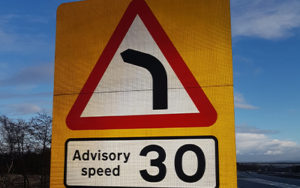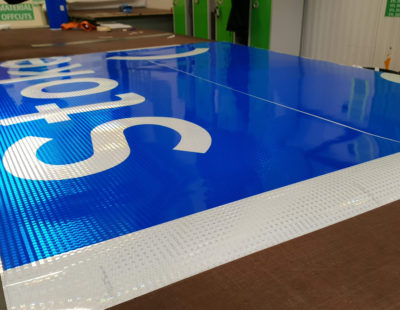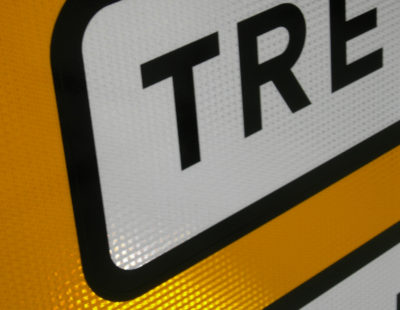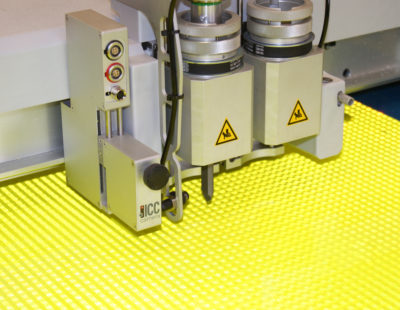Even the highest quality beaded and micro prismatic products for traffic signs can lose their retroreflective properties when dew forms. Most materials used on traffic signs cause dew to form in droplets which interfere with the passage of light. To maintain the visibility of traffic signs in dew-forming conditions, a premium dew-resistant overlay film is critical.
Lakeside Group is an established supplier of quality reflective materials and products. Avery Dennison OL-1200 dew-resistant overlay film is new to our range and can preserve the reflectivity of your traffic signs through its special coating which prevents the formation of water droplets on the surface of finished signs. With impressive durability, up to 10 year dew-resistant performance, and 12 year UV protection, this premium film is the ultimate solution.
In this guide, we explain everything you need to know about dew-resistant overlay film, including how it works and the benefits it provides.
How does dew form?
Dew forms when the temperature of an object or surface becomes cooler than the air around it. Often this happens at night, but it can occur at any time of day if the conditions are right. The temperature that causes this phenomenon is known as ‘dew point’. When dew point is reached, the water vapour in the air naturally condenses, with the surface in question determining what shape this water takes on. Certain materials will cause the dew to form rounded droplets, whereas others will allow the water to spread evenly across the whole surface.
Impact of dew on traffic sign performance
Dew can have a dramatic impact on the performance of traffic sign reflectivity. Most traffic signs have a hydrophobic top film that makes any dew form in rounded beads. These beads can disrupt the path of light entering and exiting the retroreflective film, causing it to change direction rather than reflect straight back. These signs will therefore be less visible to road users, increasing the risk of accidents. In fact, signs without a dew-resistant surface have been shown to retain only 40% reflectivity when dew forms. As dew is most likely to form over night as temperatures cool, this poses significant danger to motorists at a time when the lack of light demands sign performance.
Read next: A Beginner’s Guide to Reflective Sheeting for Traffic Signs
Hydrophobic vs. hydrophilic
To understand how dew-resistant overlay film works, it’s important to understand the difference between hydrophilic and hydrophobic materials.
- – Hydrophobic surfaces repel water. As a result, any dew that forms will take the shape of a round droplet of water that sits on the surface and doesn’t coalesce with the droplets around it.
- – Hydrophilic surfaces attract and hold onto water. If dew point is reached, the water will join together and form a flattened sheet that spreads across it.
How does dew-resistant overlay film work?
Dew-resistant overlay film improves the performance of traffic signs in conditions where dew is likely to form. This is because it has a clear, hydrophilic film, actively attracting dew across the sign’s face and encouraging it to combine and form a flat sheet of water. This sheet of water doesn’t have the same disruptive impact on light transmission as round droplets of dew. In fact, light is able to enter the reflective material on the surface of the sign and exit it in exactly the same way as it would with no dew present. As a result, the traffic sign retains full reflectivity, even when covered in dew.
Find out more about our protective overlaminates >
Benefits of dew-resistant overlay film for traffic signs
Of course, the main benefit of dew-resistant overlay film is that it prevents the formation of droplets on the surface of traffic signs. However, it also offers some additional advantages.
Self-cleaning
Traffic signs with dew-resistant overlay film are actually self-cleaning. As they are displayed vertically, gravity pulls the flat sheet of water that forms down and off the sign, also flushing away any dirt and grime that has collected on the sign. That means whenever the temperature reaches dew point, the sign is thoroughly cleaned.
UV protection
Dew-resistant films like Avery Dennison OL-1200 also offers good levels of UV protection. UV light can damage traffic signs over time, but dew-resistant films will prevent this effect – extending their service life and safeguarding performance.
Long service life
Many types of dew-resistant overlay film lose their dew-resistant properties quickly – far earlier than a standard traffic sign’s life expectancy. In contrast, OL-1200 maintains its dew-resistance for 10 years, and its UV protection for up to 12. This is a major advantage, reducing the amount of maintenance and replacement local authorities and businesses need to carry out on their signs.
Premium dew-resistant overlay film for sign performance & longevity
Our brand new dew-resistant overlay film is an essential product for local authorities and businesses seeking to provide highly visible traffic signs for road users. Avery Dennison OL-1200 has been proven to offer a better lifespan than many competitor products, retaining impressive dew performance for up to 10 years. If you want to enhance the performance of your traffic signs in all temperatures, weathers, and conditions, our premium range of products can provide the solution.
If you’re looking for unrivalled durability for your permanent traffic signage, check out the below video to find out more about our winning combination of 15 year R3C micro prismatic sheeting, durable TrafficJet inks and OL-1200 dew-resistant overlay film.
For more information about any of our products, contact us today!




